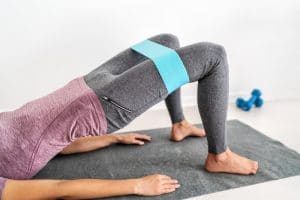
More people are getting hip replacements all the time. Some 400,000 will get one this year, and that’s expected to double by 2030.
As we age, the main reasons for needing a hip replacement tend to be arthritis and general wear and tear. Also, it’s an easier surgery than it was 30 years ago – easier to perform and to recover from.
How can we lower the chances we’ll need a ceramic or titanium replica in our hip sockets? Well, exercise is key. It helps reduce the likelihood you’ll need such a procedure. And if you do need surgery, exercise — before and after — will help you bounce back.
“If you go into surgery weak and deconditioned, it’s very well established that outcomes are not good,” said Daniel K. White, associate professor, department of physical therapy at University of Delaware and the Arthritis Foundation.
Exercise Helps Hip Replacements
Talk to me about exercise to help your hips. This will probably include strengthening your glutes (the butt muscles). That’s because joints and cartilage wither away (osteoarthritis) when they have to absorb too much load – and glutes absorb the bulk of that load. Simple moves like glute bridges and side-lying abductions are great.
Also, we’ll discuss mobility exercises like the clamshell, hip circles, and standing hip flexion. Remember, the hips are ball-and-socket joints built for mobility.
And keep your weight down. “Every 10 pounds of weight gain above the waist results in an extra 75 to 100 pounds across the joints,” said Dr. Joanne Halbrecht of the Boulder Institute for Sports Medicine.
How I Can Help
If you’ve recently had a hip replacement (or are about to), I can help you get back to full function after you’ve been discharged from physical therapy. Post-rehab exercise is one of my specialties.
I can also help you improve your eating habits if you’d like to lose extra body fat or improve your health through better nutrition.
Contact me today to learn more about how I can help you get ready for your surgery or recover afterward.
